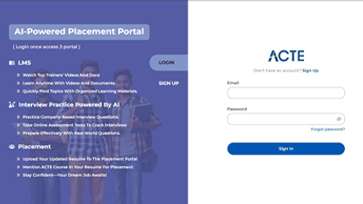1. What is the difference between UI and UX design?
Ans:
UI (User Interface) design focuses on the visual aspects of a product, including colors, buttons, typography, and layout that users interact with. UX (User Experience) design is about the overall user journey, encompassing usability, accessibility, and the intuitiveness of the product. While UI emphasizes aesthetics, UX prioritizes functionality and user satisfaction.
2. What are the essential skills a UI/UX designer should have?
Ans:
- Proficiency in design tools like Adobe XD, Figma, Sketch
- Strong understanding of user-centered design principles
- Ability to conduct user research and usability testing
- Knowledge of HTML, CSS, and basic front-end development
- Good communication and collaboration skills
3. How do you approach a new design project?
Ans:
I begin by understanding business objectives and user needs through research and stakeholder discussions. Next, I create user personas and journey maps to visualize experiences. Then, I develop wireframes and prototypes, conduct usability tests, and iterate based on feedback, collaborating closely with developers and team members throughout the process.
4. What is a user persona and why is it important?
Ans:
A user persona is a fictional representation of a target user segment, including demographics, behaviors, goals, and pain points. Personas help designers empathize with users, guide design decisions, and ensure the product addresses real user needs effectively.
5. How do you ensure your designs are accessible?
Ans:
Accessibility ensures products are usable for people with disabilities. I achieve this by using high-contrast colors, providing keyboard navigation, including alternative text for images, writing in clear language, and testing with screen readers and assistive tools. This approach benefits all users, not just those with disabilities.
6. What tools do you use for prototyping and why?
Ans:
I use Figma, Adobe XD, and InVision for rapid prototyping, interactive mockups, and seamless collaboration. These tools help stakeholders visualize designs, test usability, and provide feedback early, reducing costly changes during development.
7. Explain the importance of wireframes in UI/UX design.
Ans:
Wireframes outline the structure and flow of a product without visual distractions. They communicate layout ideas early, allow quick revisions, align teams on functionality, and serve as the blueprint guiding visual design and development.
8. How do you handle feedback or criticism on your designs?
- Listen actively and stay open-minded
- Understand the rationale behind feedback
- Evaluate whether it aligns with user needs and project goals
- Iterate and improve designs based on constructive criticism
- Communicate design decisions clearly to stakeholders
9. What methods do you use for user testing?
Ans:
- Usability testing with real users performing tasks
- A/B testing to compare design alternatives
- Surveys and interviews for qualitative feedback
- Heatmaps and analytics to track user interactions
- Remote testing tools to gather broad user input
10. How do you keep up with UI/UX design trends?
Ans:
I follow design blogs, attend webinars and conferences, engage with design communities, and take online courses. Staying updated ensures I bring fresh ideas, modern best practices, and user-friendly designs to every project.





















